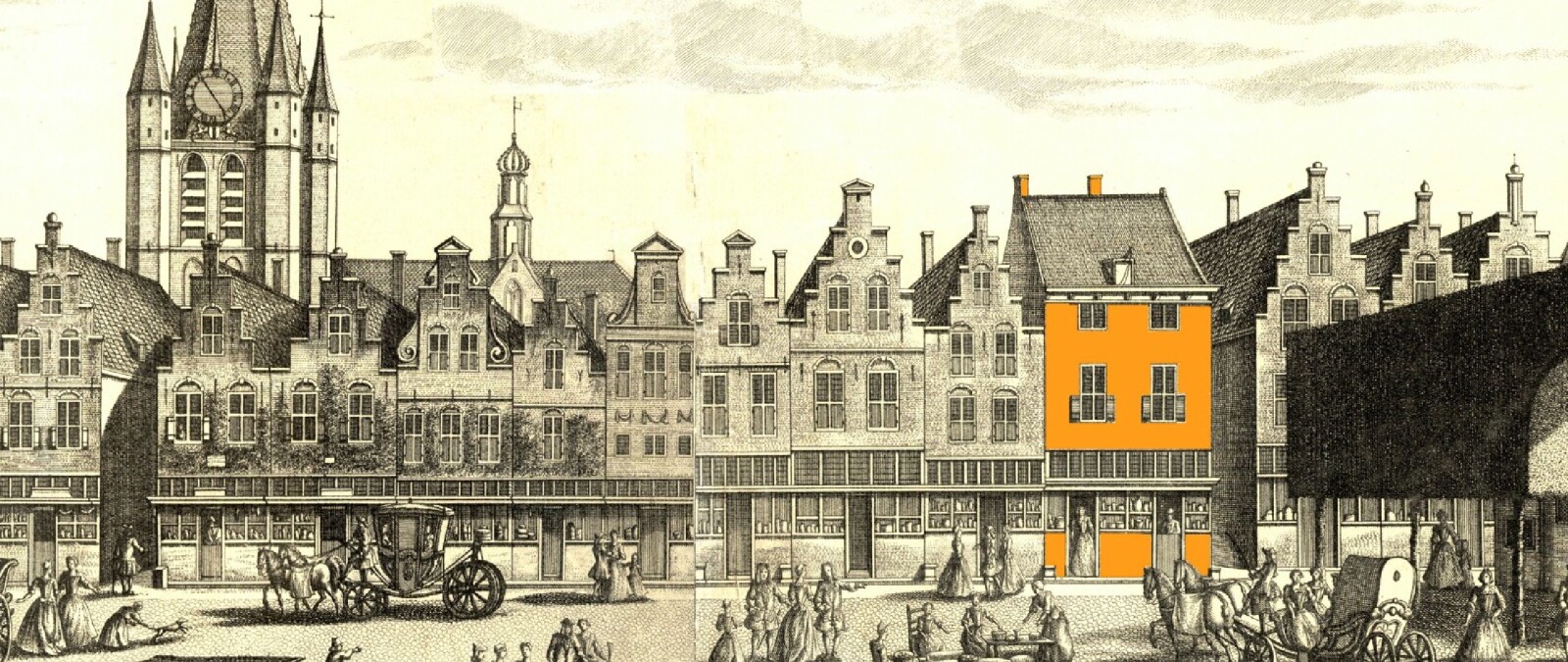We imagine Johannes Vermeer as an artist who spent day after day in his studio. However, Vermeer's life was more than just painting. In addition to his work as an artist, he fulfilled several roles to support his large family and gain his place in Delft society. Who was the man behind the canvas, and what other professions did he have that were equally crucial to his livelihood? In addition to his main profession as a painter, Johannes Vermeer (1632-1675) also had the following professions and positions:
- Innkeeper: He inherited the “Mechelen” inn on the Market Square in Delft from his father and managed it. The “Mechelen” inn was located on the western side of the Oude Manhuissteeg, on the north side of the Market Square in Delft. The alley ran alongside the inn and led to the Voldersgracht canal at the rear. The inn was demolished in 1885 to make way for the widening of the Oude Manhuissteeg. During excavations in 2019, parts of the foundation and cellar were found.
- Art dealer: Like his father, Vermeer was active in the art trade and sold paintings. Vermeer's father, Reynier Jansz (who later changed his name to Vermeer), was an established art dealer and silk weaver in Delft. He owned the inn “De Vliegende Vos” and later “Mechelen” on the Markt, where he also traded in art. Johannes grew up in this environment, surrounded by art and artists, which probably gave him a deep knowledge of the art market.
- Head of the Guild of Saint Luke: Vermeer was repeatedly elected head of the Delft Guild of Saint Luke, the professional guild for painters. This was an important administrative position within the art world of that time. Membership of the Guild of Saint Luke, which he obtained in 1653, also gave him the right to trade in art (in addition to painting).
- Appraiser of paintings: Because of his expertise, he was also called upon to appraise paintings, for example as an expert witness in disputes over the authenticity of works of art. In the 17th century, it was common for works of art to be used as collateral for loans, as part of inheritances or in bankruptcies. In such situations, it was essential to have the value of the works of art professionally determined.
There were several reasons why Johannes Vermeer had multiple professions and positions:
- Economic necessity: Although his paintings were of exceptional quality, Vermeer produced only a small number per year (about two to three). This was probably not enough to fully support his large family (he had eleven children), especially in times of economic hardship, such as the Disaster Year of 1672. The other professions, particularly art dealing and managing the inn, were crucial sources of income.
- Family business: Vermeer inherited the inn “Mechelen”, located on the Market Square in Delft, and the art trade from his father. It was therefore an existing family business that he continued, which was a natural complement to his activities as a painter.
- Social status and expertise: His position as head of the Guild of Saint Luke and his work as an appraiser of paintings were not direct sources of income in the short term, but they confirmed his status as a respected and knowledgeable member of the art community in Delft. These positions gave him authority and networks that could also be beneficial to his art trade.
The image in the header is a section of an 18th-century print by Leonard Schenk, coloured by Kees van der Wiel, based on a drawing by Abraham Rademaker (www.achterdegevelsvandelft.nl).
-en.webp)
